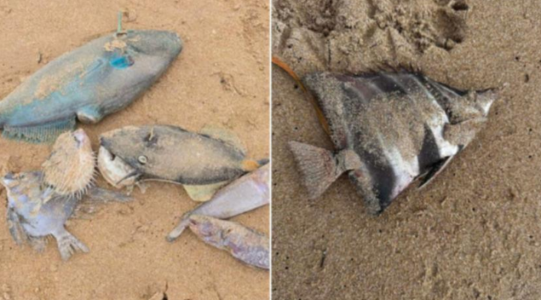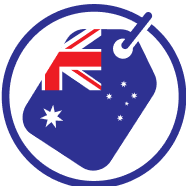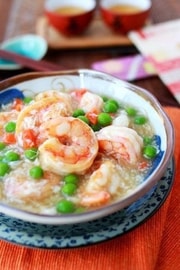Troubling changes hit coastline ahead of holidays, stirs public discussion
By
Gian T
- Replies 6
An environmental issue threatens to disrupt beach plans as the holiday season approaches.
The once-pristine coastline, known for its vibrant marine life, faces challenges from toxic seafoam, which affects local ecosystems and raises concerns among residents and visitors.
The situation has sparked widespread discussions on potential long-term impacts.
Like the foam atop a milkshake, the frothy menace has spread across the Fleurieu Peninsula, including Kangaroo Island, leaving a trail of ecological destruction in its wake.
Reports of dead sea life, including cockles, octopuses, puffer fish, seahorses, and even kangaroos, have surfaced on the shores of some of South Australia's most iconic surf beaches.
The Alexandrina Council has warned the public against touching or consuming the dead shellfish that now litter the beaches from Goolwa to Victor Harbour.
The situation is dire, with thousands of dead cockles blanketing the sand, a grim indicator of the bloom's toxicity.
Shane Mensforth, editor of SA Angler magazine, has expressed concern over the timing of this environmental disaster, noting that the Easter and school holidays are a peak period for tourism in the region.
'From what I’ve seen of the cockles on the beach, this will upset the local cockling industry, and those who plan to fish the Murray Mouth, Goolwa or Victor Harbour and Rapid Bay may have to think twice (about fishing),' he said.
'You don’t want to be caught eating fish that come out of the waters.'
'This could mean millions in lost revenue in tourism in the area.'
With the toxic foam deterring beachgoers and anglers, local industries are bracing for an early downturn before winter.
This toxic bloom is caused by a microalgae known as Karenia minimoto, which has been thriving due to an ongoing marine heatwave.
Water temperatures are 2.5°C warmer than usual, coupled with calm marine conditions, allowing algae to flourish.
The algae pose a threat not only to marine life but also to humans who come into contact with it.
Exposure can lead to respiratory and eye irritation, skin rashes, stomach upsets, or flu-like symptoms.
Despite the alarming situation, no beach closures have been announced as of yet.
Authorities closely monitor the situation, including the Environment Protection Authority (EPA), SA Health, and the Department for Environment and Water.
Testing is underway to determine the extent of the bloom's impact, but results have not been confirmed.
'SA Health has advised people to avoid swimming in obviously affected areas of the sea and to avoid contact with discoloured water,' the council warned.
'However, dead fish and cockles should not be taken for human consumption due to issues associated with decomposition and spoilage.'
Surfers and swimmers who venture into the water are encouraged to wash off with clean water afterward, as some have reported respiratory conditions after exposure.
There is a silver lining for those who wish to fish off the beaches: fish caught alive are considered safe to eat.
However, the discovery of the microalgae came after surfers at Newland Head in Waitpinga reported symptoms such as sore throats, coughs, sore eyes, and even vision impairment after being in the water in mid-March.
The community is calling for transparency and action. Fleurieu Peninsula resident Thomas Macfarlane has launched a petition demanding that the government release reports about the algae bloom to the public.
While Macfarlane clarifies that he does not believe cloud seeding is responsible for the algal blooms, he advocates for a thorough investigation into all potential environmental factors contributing to the crisis.
As we head into the holiday season, beachgoers must stay informed and heed the warnings issued by health and environmental authorities.
The toxic seafoam presents a clear danger to South Australians' cherished coastal lifestyle, and only through collective awareness and action can we hope to mitigate its deadly impact.
If you notice anything unusual along the coast, such as dead or dying fish, you are urged to call FISHWATCH on 1800 065 522.
This unfolding situation is a stark reminder of the delicate balance of our marine ecosystems and the need for vigilance in protecting our natural treasures.
As we await further updates, let's hope for a swift resolution to the toxic seafoam crisis so that the community can once again enjoy the beauty and bounty of South Australia's coastline.

Have you changed your beach or holiday plans because of the toxic seafoam? Did you experience any symptoms or notice anything unusual after visiting the coast recently? Let us know in the comments below.
The once-pristine coastline, known for its vibrant marine life, faces challenges from toxic seafoam, which affects local ecosystems and raises concerns among residents and visitors.
The situation has sparked widespread discussions on potential long-term impacts.
Like the foam atop a milkshake, the frothy menace has spread across the Fleurieu Peninsula, including Kangaroo Island, leaving a trail of ecological destruction in its wake.
Reports of dead sea life, including cockles, octopuses, puffer fish, seahorses, and even kangaroos, have surfaced on the shores of some of South Australia's most iconic surf beaches.
The Alexandrina Council has warned the public against touching or consuming the dead shellfish that now litter the beaches from Goolwa to Victor Harbour.
The situation is dire, with thousands of dead cockles blanketing the sand, a grim indicator of the bloom's toxicity.
Shane Mensforth, editor of SA Angler magazine, has expressed concern over the timing of this environmental disaster, noting that the Easter and school holidays are a peak period for tourism in the region.
'From what I’ve seen of the cockles on the beach, this will upset the local cockling industry, and those who plan to fish the Murray Mouth, Goolwa or Victor Harbour and Rapid Bay may have to think twice (about fishing),' he said.
'You don’t want to be caught eating fish that come out of the waters.'
'This could mean millions in lost revenue in tourism in the area.'
With the toxic foam deterring beachgoers and anglers, local industries are bracing for an early downturn before winter.
This toxic bloom is caused by a microalgae known as Karenia minimoto, which has been thriving due to an ongoing marine heatwave.
Water temperatures are 2.5°C warmer than usual, coupled with calm marine conditions, allowing algae to flourish.
The algae pose a threat not only to marine life but also to humans who come into contact with it.
Exposure can lead to respiratory and eye irritation, skin rashes, stomach upsets, or flu-like symptoms.
Despite the alarming situation, no beach closures have been announced as of yet.
Authorities closely monitor the situation, including the Environment Protection Authority (EPA), SA Health, and the Department for Environment and Water.
Testing is underway to determine the extent of the bloom's impact, but results have not been confirmed.
'SA Health has advised people to avoid swimming in obviously affected areas of the sea and to avoid contact with discoloured water,' the council warned.
'However, dead fish and cockles should not be taken for human consumption due to issues associated with decomposition and spoilage.'
Surfers and swimmers who venture into the water are encouraged to wash off with clean water afterward, as some have reported respiratory conditions after exposure.
There is a silver lining for those who wish to fish off the beaches: fish caught alive are considered safe to eat.
However, the discovery of the microalgae came after surfers at Newland Head in Waitpinga reported symptoms such as sore throats, coughs, sore eyes, and even vision impairment after being in the water in mid-March.
The community is calling for transparency and action. Fleurieu Peninsula resident Thomas Macfarlane has launched a petition demanding that the government release reports about the algae bloom to the public.
While Macfarlane clarifies that he does not believe cloud seeding is responsible for the algal blooms, he advocates for a thorough investigation into all potential environmental factors contributing to the crisis.
As we head into the holiday season, beachgoers must stay informed and heed the warnings issued by health and environmental authorities.
The toxic seafoam presents a clear danger to South Australians' cherished coastal lifestyle, and only through collective awareness and action can we hope to mitigate its deadly impact.
If you notice anything unusual along the coast, such as dead or dying fish, you are urged to call FISHWATCH on 1800 065 522.
This unfolding situation is a stark reminder of the delicate balance of our marine ecosystems and the need for vigilance in protecting our natural treasures.
As we await further updates, let's hope for a swift resolution to the toxic seafoam crisis so that the community can once again enjoy the beauty and bounty of South Australia's coastline.
Key Takeaways
- Toxic sea foam continues to cause problems along South Australia's coastline, with an increase in dead sea life being reported.
- Local industries, such as tourism and fishing, may suffer significant losses due to the effects of the algae bloom right before the holiday season.
- Authorities and government departments are conducting tests and have not advised the closure of affected beaches but recommend avoiding contact with discoloured water and not consuming dead sea life.
- Residents are concerned about the source of the algae bloom and are seeking transparency, with some questioning the impact of cloud seeding and other environmental factors.








